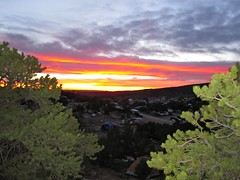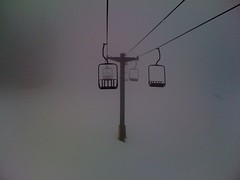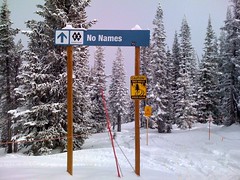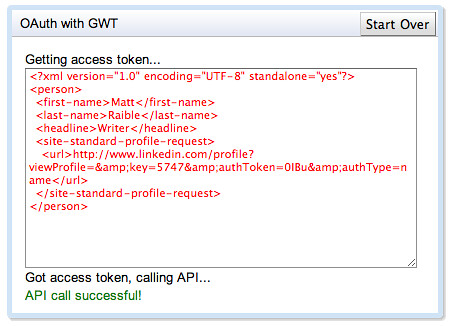My Incredible Trip to Ireland
If you ever get a chance to travel to Ireland, take it! I don't know when I heard these words, or how they came into my head, but I remembered them clearly when I was first introduced to Barry Alistair by Jeff Genender. Soon after, I was able to negotiate my way into being a speaker at The 2010 Irish Software Show.
The show was last week and I had a blast traveling to Dublin to speak and explore. My sister came me on this trip, but missed a connection in Seattle and had to join me a day late. I left Denver at noon on Monday and arrived at Dublin Airport at 7 am. I was on the same flight as Josh Long and thoroughly enjoyed my iPad as a travel companion. When I got off the plane, my battery life was at 60% and I'd been watching movies and listening to music for 6 hours.
I took a cab through the misty, cool morning to my hotel. I grabbed a coffee, cleaned up, and walked a few blocks to Trinity College for the conference. I made it in time for the opening keynote by Chris Horn. It was an interesting talk, focusing on what needed to happen to make Ireland the Innovation Hub of Europe. After that, I attended Tim Berglund's session on Complexity Theory and Software Development. After lunch and a few more talks, I teamed up with Andres Almiray and Josh Long for a pint at the hotel bar.
That evening, we attended Jeff Genender's talk on Getting into Open Source. The free drinks loosened everyone up and Jeff did a great job with a humorous presentation on how to get Committer Status. After Jeff's talk, about 10 of us headed to a Moroccan restaurant for a late dinner. I was in bed around midnight.
Wednesday morning, my sister arrived in my hotel room at 8 and promptly fell into bed. I set my alarm to sleep an hour and closed the Vegas-style, no-light-allowed curtains. We awoke much later (12:30) than we'd planned (9:00). We quickly got up and headed for some sight-seeing in Dublin. First off, we hit Dublinia and Christ Church Cathedral. Both sites were spectacular and we both learned a lot about the history of Dublin. From there, we skipped across the bridge to The Old Jameson Distillery for a tour and a bit of whiskey.
The picture below was taken on the Ha'penny Bridge as we were heading back from Jameson. The expression of the girl on the left is priceless.
A couple hours later and I was delivering my talk on The Future of Web Frameworks. The crowd was lively; the Guinness I drank while talking was lovely. My session was followed by a Web Framework Experts Panel with Peter Ledbrook (Grails), Jamie van Dyke (Rails), Shay Friedman (ASP.NET MVC), Julian Fitzell (Seaside) and myself (Java Frameworks). The debate was good and there was much discussion about the right apps for each framework and how important statelessness is for scalable applications. After 3 hours of talking, my sister and I headed back to the hotel. I was particularly happy about the evening since it was the first time a family member of mine had seen me speak.
Correction from my Dad: This wasn't the first time a family member saw me speak. He attended my talk at ApacheCon EU 2007.
A block from the hotel, we spotted a nice looking pub (Doyles) and stopped in for a pint. As we bellied up to the end of the bar, we recognized Jamie (from the panel) and got introduced to his friend Rob. We quickly got lost in conversation, stories and laughter and were surprised when we discovered it was 2:30am. Since I had a talk first thing in the morning, we ducked out shortly after.
Thursday started with my talk Comparing Kick-Ass Web Frameworks. Then my sister and I did some more site-seeing, starting at the Guinness Storehouse. We met Josh and John Willis as they were leaving and they advised we go straight to The Gravity Bar at the top. We took there advise and were getting great views of Dublin and savoring sweet pints of Guinness moments later. The tour facility was freakin' awesome and I loved how it was shaped like a pint glass.
We grabbed some gear from the gift shopped and landed (by accident) at The Brazen Head (Ireland's Oldest Pub, Est. 1198) for a pint of cider and Guinness. Since my sister used to be in the cider business, she was particularly happy there was so much on tap in Ireland.
From the pub, we headed to John Willis's session on The Cambrian Cloud Explosion. Following John's session, we headed to the Speaker's Dinner for a very fun evening with the hosts and speakers of the conference.
On Friday, we woke up in the early afternoon and quickly decided the Book of Kells was our best chance of getting some site seeing in. After visiting the Book of Kells, my favorite quote of the conference happened in the courtyard.
Josh looked at Jamie (with his bad hangover) and exclaimed, "My God Man. Your skin is so white it's hurting my eyes!". You probably had to be there (or know Josh) to enjoy the humor, but I wanted to capture the memory in this post so I could laugh whenever I read this in the future. After that, Jamie, Josh, Kalin and I enjoyed a Starbuck's patio talking about living in the South of France for a couple hours. Then we walked 2 blocks to the Porterhouse Brewing Co. to watch the World Cup and enjoy more interesting conversations.
Jamie left the conference that evening and we joined a whole slew of other speakers for dinner at an excellent Lebanese restaurant near Temple Bar. Good times where had afterwards at a nearby Silent Disco.
Saturday, we woke up early to catch a tour bus out to Glendalough with Josh and John. The bus ride was not pleasant, but the destination was spectacular. We hung out there for several hours, exploring the buildings, walking to the lake and humoring each other.
Our last night in Dublin was an early, relaxing one. As you can tell, I really enjoyed this trip, particularly hanging out with my sister and all the cool people we met. I can easily say that this trip registers as one of my favorite conference experiences to date.
To see all the pictures I took on this trip, check out my Irish Software Show 2010 set on Flickr.























































































